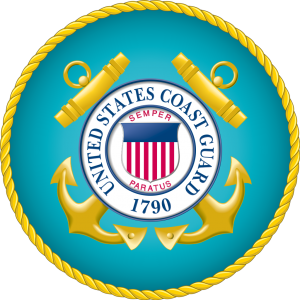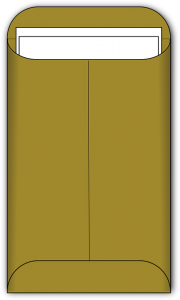USCG Captain’s License: Ultimate Guide
When do you need a captain’s license?
 If you are planning to carry paying passengers on a vessel (chartering a boat) in U.S. Coast Guard regulated waters you need to have a USCG captain’s license.
If you are planning to carry paying passengers on a vessel (chartering a boat) in U.S. Coast Guard regulated waters you need to have a USCG captain’s license.
Sometimes, maritime training instructors also need a captain’s license. Another reason you might need a captain’s license is for insurance purposes. Some insurance companies require that the boat has a licensed captain onboard, while others offer discounted rates.
To carry up to six paying passengers on a vessel of up to 100 gross tons you need an Operator of Uninspected Passenger Vessels (OUPV) Captain License – also called a six-pack captain’s license. The 6-pack captain’s license requirements include that you are at least 18 years old. You do not have to be a U.S. citizen, but you have to provide proof of permanent U.S. residency.
If you are intending to carry more than six paying passengers you need a Master Captain’s License – the highest level captain’s license issued by the USCG. The master captain’s license requirements include that you are at least 19 years old and a U.S. citizen.
How to become a boat captain
1. Captains license sea time requirements
 To qualify for a USCG captain’s license you must have a minimum of 360 days of sea service; of which 90 days must be in the last three years (“recency” clause). The type of captain’s license you qualify for depends on your sea service experience.
To qualify for a USCG captain’s license you must have a minimum of 360 days of sea service; of which 90 days must be in the last three years (“recency” clause). The type of captain’s license you qualify for depends on your sea service experience.
Sea service time can be counted from your 16th birthday. It must be documented on the Small Vessel Sea Service Form, or detailed in a letter, and signed off by the owner/operator/master of the vessel on which you conducted the service. If you did your sea service on more than one vessel, a separate form must be used for each vessel. If you are the owner of the vessel you must present proof of ownership.
Eight hours underway (not moored or anchored) in a 24-hour period counts as one day of sea service on vessels over 100 gross tons. For vessels less than 100 gross tons, no less than four hours underway counts as a day. It is important to identify the waters (inland, great lakes or near coastal) that the vessel was operating on as this will determine the type of captain’s license you qualify for.
USCG captain’s licenses are issued to operate vessels either inland, on great lakes or near coastal. To become a boat captain on great lakes you need at least 90 days sea service time on great lakes. The sea service requirements for operating a vessel near the coast depends on whether you are applying for an OUPV Captain’s License or a Master Captain’s License.
The gross tons of the vessel is also important to document – especially when applying for a Master Captain’s License. Tonnage refers to the volume of the boat and not the weight. If the tonnage of the boat is unknown (check the vessel’s documentation), the length, width and depth can be filled in on the Small Vessel Sea Service Form in order for the USCG to calculate the tonnage. The registration/identification number of the vessel must also be provided or the USCG will not accept the sea service form.
2. Study
 Once you qualify for a captain’s license, in terms of your experience on the water, you need to do a relevant course and pass the necessary exam. You can choose to attend a maritime training academy or do a USCG captain’s license online course. The examination can be taken either at one of the USCG test centers or at a USCG approved course provider’s test locations.
Once you qualify for a captain’s license, in terms of your experience on the water, you need to do a relevant course and pass the necessary exam. You can choose to attend a maritime training academy or do a USCG captain’s license online course. The examination can be taken either at one of the USCG test centers or at a USCG approved course provider’s test locations.
You will be quizzed on the following sections:
- Rules of the Road (you need to correctly answer 90% of 30 questions)
- Navigation General (you need to correctly answer 70% of 30 questions)
- Chart Navigation (you need to correctly answer 70% of 10 questions)
- Deck General and Safety (you need to correctly answer 70% of 60 questions)
- For a master captain’s license: Master 25/50/100 Ton (you need to correctly answer 70% of 70 questions)
You can find up-to-date captain’s license practice test questions, released directly from the U.S. Coast Guard, at USCGQ.com.
3. Additional requirements
- Pass a physical
- Pass a drug test
- Obtain a CPR and basic first aid card
- Request a criminal background and driving record check by applying for a Transportation Workers Identification Credential (TWIC) card at the Department of Homeland Security.
4. Apply
 Your application packet should contain:
Your application packet should contain:
- Merchant Mariner Credential (MMC) Application Form (CG-719B)
- Copy of Certificate of Training
- Copy of your CPR & First aid card (front and back)
- TWIC application receipt
- Conviction Disclosure Statement (if convicted of anything) (CG-719C)
- Small Vessel Sea Service Form (CG-719S)
- Medical Form (CG-719K)
- DOT/USCG Drug Testing Form (CG-719P)
- Oath Form
- Receipt of payment (you can pay applicable fees at Pay.gov)
You must apply at your USCG regional exam center in person, by mail or electronically. Your application must be accompanied by photo identification.
How much does it cost to get a U.S. Coast Guard captain license?
 Becoming a charter boat captain is not cheap. There are numerous costs involved in the application process. Without even counting course fees, the application can cost over $500.
Becoming a charter boat captain is not cheap. There are numerous costs involved in the application process. Without even counting course fees, the application can cost over $500.
You need to pay the USCG for the issuance of the Merchant Mariner Credential ($45) and for processing the license application ($100). If you are undertaking the examination at a USCG exam center (and not with an approved course provider) you also need to pay the examination fee ($95).
But it doesn’t end there. You need to pay the TWIC enrollment fee; for the physical exam and drug screening; and for First Aid/CPR Training.
A good tip is to submit your application to the USCG before enrolling in a course. Once the application is approved by the USCG, in terms of the required documentation, you will receive a notification indicating “Approval to Test (ATT)”. That way you can be sure your application will be approved before paying course tuition fees.
Also see USCG captain’s license renewal requirements, upgrade requirements and endorsements.
